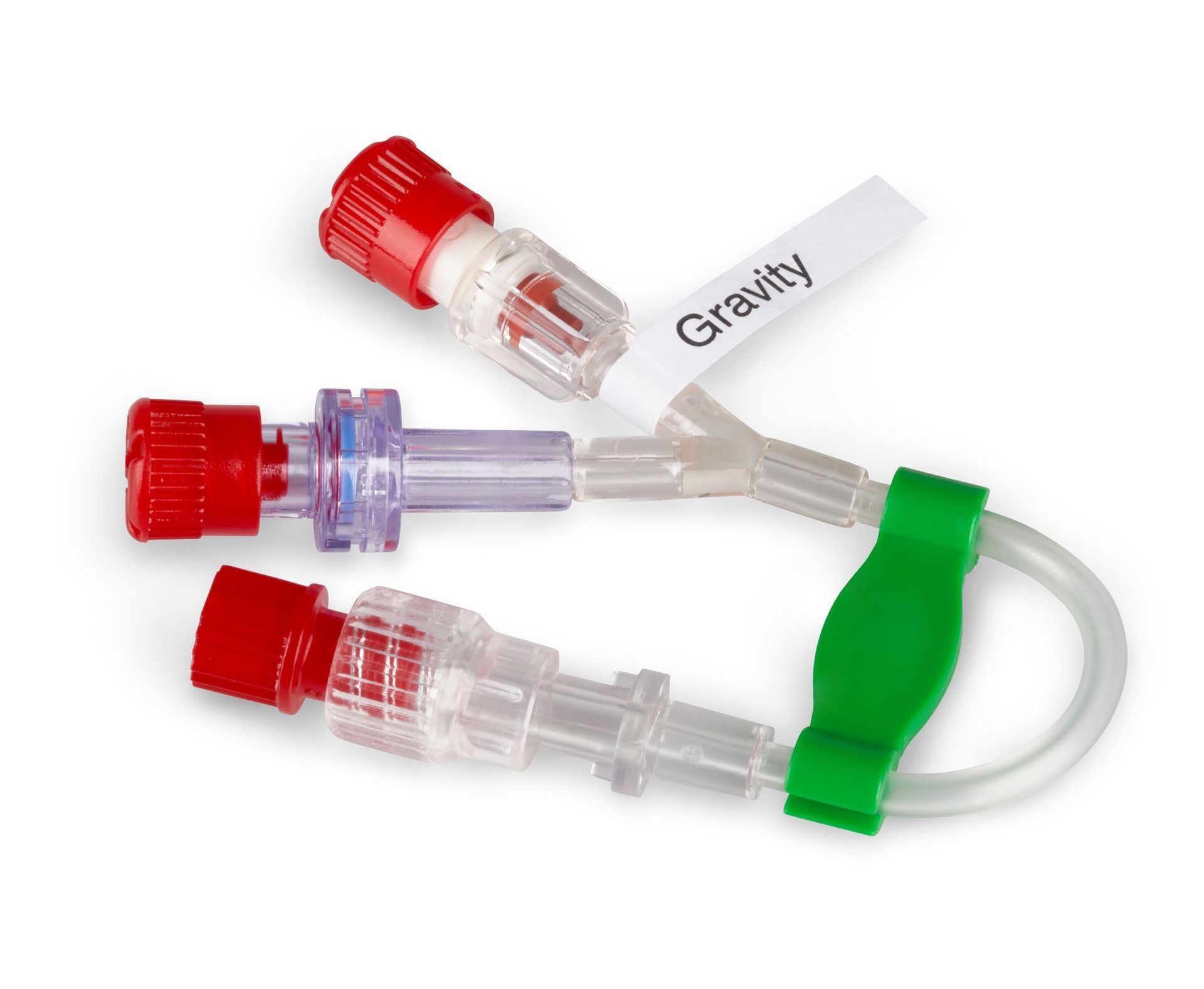What are the application areas of high-flow peripheral IV connectors?
Intravenous (IV) connectors play an integral role in the medical field. Serving as vital components of IV systems, these devices enable the connection between various components within the system. Although we've explored the diverse types of IV connectors in a previous article, this piece explores specialised high-flow extension sets, more deeply focusing on their numerous application areas.
Unlike typical IV connectors, high-performance IV connectors are designed to handle elevated flow rates. This capability is highly important when faced with scenarios demanding swift infusion of medications and fluids.
Such situations are commonplace in critical care environments, emergency departments and other serious medical scenarios. For example, fast fluid delivery can be the difference between life and death in certain scenarios.
Occasionally, HCPs use multiple IV connectors and or extension sets to the extend the primary IV line’s length. This can be helpful offering clinicians additional working space.
High-flow peripheral intravenous connectors in obstetrics
Intravenous fluid therapy in obstetrics is vital in specific situations such as postpartum haemorrhage. These connectors can help with efficient delivery of fluids and medications, in potential emergencies.
Labour
High-flow IV connectors can be used to establish early IV access during the initial phase of labour to facilitate the swift administration of fluids and electrolytes.
Caesarean sections
During caesarean sections or other surgical interventions, these connectors facilitate swift access for IV fluids and medications if required.
Postpartum Haemorrhage
One of the most serious complications in obstetrics is postpartum haemorrhage.1 High-flow IV connectors can be a useful tool in these scenarios, as they allow for the speedy infusion of crystalloids or other desired fluids and medications when attempting to stabilise the mother's condition.
High-flow peripheral IV connectors in emergency
High-flow peripheral intravenous connectors also have applications in emergency care settings, offering another useful tool in a high-stake environment.
Orthopaedic Trauma
For individuals with severe orthopaedic injuries, whether fractures, dislocations, or intense crush injuries where the situation may necessitate swift fluid resuscitation, following associated blood loss, or potential shock. High-flow IV sets could play a pivotal role, aiding in delivering fluids and blood products to stabilise the patient.
Sepsis
Sepsis is a life-threatening condition which requires timely intervention to save the life of the patient. Here, high-flow IV sets may expedite the delivery of antibiotics, fluids and other essential medications sometimes required to manage the underlying infection and uphold the function of vital organs.
High-flow peripheral IV connectors in ICU and other areas
In the demanding environments of ICUs, trauma care and specialised medical units, high-flow IV connectors are a useful tool for patients facing critical health challenges.
Intensive Care Units (ICUs)
The demands on healthcare equipment and strategies in intensive care units are intense. High-flow IV sets cater to these needs, especially when dealing with cases like sepsis, multiple organ failure, or complications following surgery when timely IV therapy is required.
High Dependency Units (HDUs)
High Dependency Units (HDUs) monitor and manage patients needing consistent observation, regular assessments, and specific treatments. High-flow intravenous connectors can support precision and speed of medication delivery for these patients.
Burn care
Managing patients with extensive burns is a complex process. These patients often have a heightened need for fluids, essential electrolytes, and pain management solutions. High flow IV connectors may have a role to play here.

The importance of high-flow peripheral intravenous connectors
High-flow IV connectors have proven to be of vital importance across diverse medical settings, particularly where rapid fluid delivery is necessary to preserve life and improve patient outcomes.
Not all IV connectors are made equally though, and determining the right device comes down to evaluating patient demographics and the potential for complications.
Find out more about Mediplus fast-flow IV connectors, by visiting our page on peripheral intravenous connectors.
References:
- Rani PR, Begum J. Recent Advances in the Management of Major Postpartum Haemorrhage - A Review. J Clin Diagn Res. 2017;11(2):QE01-QE05. doi:10.7860/JCDR/2017/22659.9463
Company REG. NO. 2051641
Copyright © 2020 Mediplus Ltd.